Join More Than 50,000+ Subscribers and get latest camera news and rumors
NEW CAMERA VIDEOS ON YOUTUBE
Download Our Android App
|
By admin, on January 6th, 2020
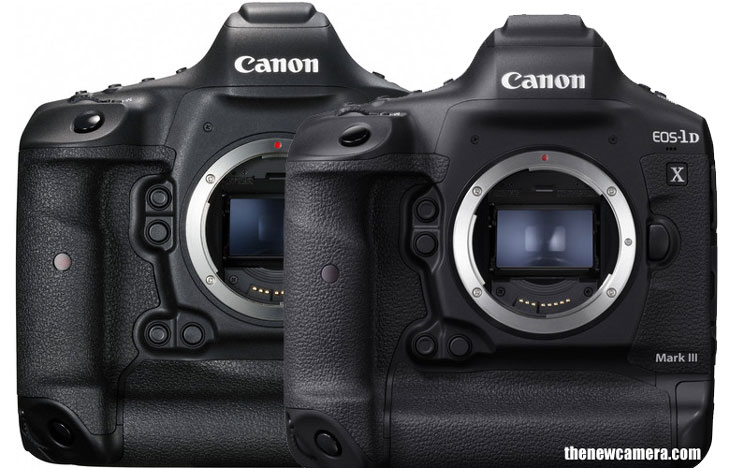
Get Canon 1DX Mark III camera from Amazon.com | B&H Store
TNC Exclusive – We are the first website to published detailed specification comparison review between the two camera.
Let’s have a specification comparison between the two flagship camera. The long rumored Canon 1DX Mark III camera finally arrived just before 2020 Olympic. Canon Took more than 4 years of time to create a brand new flagship camera and not only that consumers have to spend more than $6000+ to get the new body. In general Canon flagship camera arrives with lot of modifications from inside-out. Now, in this comparison we have compared each and every core specification of the camera to find out the best one.
1. Does Canon 1DX Mark III have new sensor ?
The short answer in no. They are using the same old 20MP CMOS technology they have used in the Canon 1DX Mark II camera. The sensor is redesigned to have better AF performance. So, you will be getting almost same image quality from both the camera.
2. Does Canon 1DX Mark III Have Better Image Quality than Canon 1DX Mark II ?
Slightly better (Upto 1 stop). We are getting slightly better image quality in the new Canon 1DX Mark III camera due to the introduction new Dual-Digic 6 image processor inside the camera we are getting 1 stop more ISO range in extended mode compared to the Canon 1DX Mark II camera. Not only that Canon 1DX Mark III also features new image decoding algorithm and with the help of the that we may notice some betterment in the DR, performance of the camera.
3. Sensor Details Comparison – Canon 1DX Mark III vs Canon 1DX Mark II
| Lens Mount |
Canon EF |
Canon EF |
| Camera Format |
Full-Frame (1x Crop Factor) |
Full-Frame (1x Crop Factor) |
| Pixels |
Actual: 21.5 Megapixel
Effective: 20.2 Megapixel |
Actual: 21.5 Megapixel
Effective: 20.2 Megapixel |
| Maximum Resolution |
5472 x 3648 |
5472 x 3648 |
| Aspect Ratio |
3:2 |
3:2 |
| Sensor Type |
CMOS |
CMOS |
| Sensor Size |
36 x 24 mm |
36 x 24 mm |
| Image File Format |
JPEG, RAW |
JPEG, HEIF, Raw |
| Bit Depth |
14-Bit |
14-Bit |
| Image Stabilization |
None |
None |
Having a 20MP sensor isn’t a bad thing for sports shooter, but not updating it even after 5 years of gap is bad. We do know that Sony is using BSI and Stacked CMOS sensor in their flasghip A7 and A9 cameras. But, in Canon we are still sicked to plain CMOS Tech that’s really embarrassing in 2020. ISO range of the camera extended upto 1 stop in MAX range thanks to the new image processor and image decoding algorithms.
| ISO Sensitivity |
Auto, 100 to 51200 (Extended: 50 to 409600) |
Auto, 100 to 51200 (Extended: 50 to ISO 819200) |
| Shutter Speed |
Electronic Front Curtain Shutter
1/8000 to 30 Seconds
Bulb Mode |
Electronic Front Curtain Shutter
1/8000 to 30 Seconds
Bulb Mode |
| Metering Method |
Evaluative, Partial, Spot |
Evaluative, Partial, Spot |
| Exposure Modes |
Aperture Priority, Manual, Program, Shutter Priority |
Aperture Priority, Manual, Program, Shutter Priority |
| Exposure Compensation |
-5 to +5 EV (1/3, 1/2 EV Steps) |
-5 to +5 EV (1/3, 1/2 EV Steps) |
| Metering Range |
0 to 20 EV |
0 to 20 EV |
| White Balance |
Auto, Cloudy, Color Temperature, Custom, Daylight, Flash, Fluorescent (White), Shade, Tungsten |
Auto, Cloudy, Color Temperature, Custom, Daylight, Flash, Fluorescent (White), Shade, Tungsten |
| Continuous Shooting |
Up to 14 fps at 20.2 MP for up to 170 Exposures (Raw) |
Up to 20 fps at 20.2 MP for up to 1000+ Exposures (Raw) |
| Interval Recording |
No |
No |
| Self-Timer |
2/10-Second Delay |
2/10-Second Delay |
| Mirror Lock-Up |
Yes |
Yes |
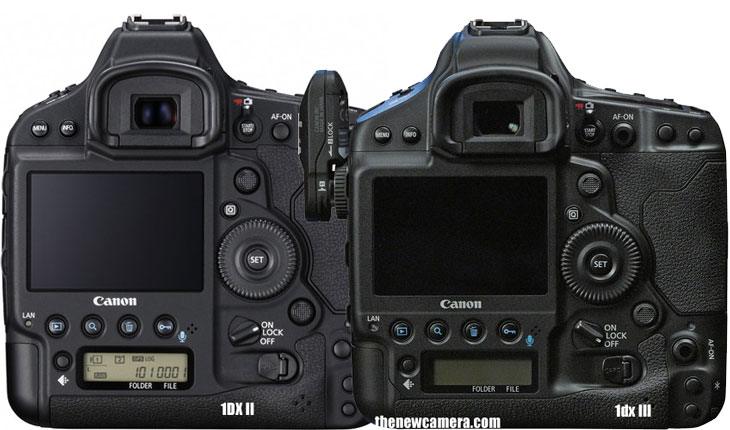
4. Best Canon Video DSLR 2020 ?
Undoubtedly Canon 1DX Mark III is the best Canon DSLR camera of 2020. The Canon 1DX Mark III camera does full sensor readout and uncroopped 4K Video recording with DPAF support upto 24 and 30 FPS. The camera is also able to record 5.4K Video, which is really a amazing thing for a DSLR camera. But, unfortunately we do have some limitations like now DPAF in RAW video mode as well as no DPAF in 4K Video mode at 60p/50p. See the list of DPAF limitations here
| Recording Modes |
DCI 4K (4096 x 2160) at 50p/59.94p [800 Mb/s]
DCI 4K (4096 x 2160) [500 Mb/s]
Full HD (1920 x 1080) at 100p/119.88p [360 Mb/s]
Full HD (1920 x 1080) at 50p/59.94p [180 Mb/s]
Full HD (1920 x 1080) at 23.976p/24.00p/25p/29.97p [90 Mb/s]
Full HD (1920 x 1080) at 50p/59.94p [60 Mb/s]
Full HD (1920 x 1080) at 23.976p/24.00p/25p/29.97p [30 Mb/s]
Full HD (1920 x 1080) at 50p/59.94p [60 Mb/s]
Full HD (1920 x 1080) at 23.976p/24.00p/25p/29.97p [30 Mb/s]
Full HD (1920 x 1080) at 25p/29.97p [12 Mb/s] |
5.4K RAW (59.94p / 50.00p) 2,600 Mbps
5.4K RAW (29.97p / 25.00p / 24.00p / 23.98p)
4K DCI (59.94p / 50.00p) / ALL-I
4K DCI (59.94p / 50.00p) / IPB
4K DCI (29.97p / 25.00p / 24.00p / 23.98p) / ALL-I
4K DCI Crop (29.97p / 25.00p / 24.00p / 23.98p) / IPB Approx. 120 Mbps
4K UHD (59.94p / 50.00p) / ALL-I
4K UHD (59.94p / 50.00p) / IPB
4K UHD (29.97p / 25.00p) / ALL-I
Full HD (119.9p / 100.0p) / ALL-I
Full HD (59.94p / 50.00p) / ALL-I
Full HD (59.94p / 50.00p) / IPB
Full HD (29.97p / 25.00p) / ALL-I
|
| External Recording Modes |
Full HD (1920 x 1080) at 100p/120p
Full HD (1920 x 1080) at 50p/59.94p
Full HD (1920 x 1080) at 23.976p/24.00p/25p/29.97p
Full HD (1920 x 1080) at 25p/29.97p |
|
| Recording Limit |
Up to 29 Minutes, 59 Seconds for DCI 4K (4096 x 2160) |
Up to 29 Minutes, 59 Seconds |
| Video Encoding |
NTSC/PAL |
|
| ISO Sensitivity |
Auto/Manual: 100 to 25600 |
Auto/Manual: 100 to 25600 |
| Audio Recording |
Built-In Microphone (Mono)
External Microphone Input |
Built-In Microphone (Mono)
External Microphone Input |
| Audio File Format |
AAC, Linear PCM (Stereo) |
AAC, Linear PCM (Stereo) |
5. Fastest Canon Camera in 2020 ?
We have to accept the fact Canon done lot of improvement in Canon 1DX Mark III camera compared to its predecessor. Canon New 1DX Mark III camera features
- Brand New Phase AF Sensor (191 AF point)
- New Eye AF Tracking Modes in Still and Video (III / 3rd gen DPAF Tech finally in flagship )
- Continuous AF upto 16FPS (MAX 20 FPS)
- AF Sensitivity range improved (Upto 1 Stop)
- 525 AF Zones added to redesigned 20MP Sensor (More dense AF)
6. AF System Comparison – Canon 1DX Mark III vs Canon 1DX Mark II
| Focus Type |
Auto and Manual Focus |
Auto and Manual Focus |
|
| Focus Mode |
Continuous-Servo AF (C), Manual Focus (M), Single-Servo AF (S) |
Continuous-Servo AF (C), Manual Focus (M), Single-Servo AF (S) |
|
| Autofocus Points |
Phase Detection: 61 (41 Cross-Type) |
Up to 191 points (cross type AF point: up to 155 points) |
|
| Autofocus Sensitivity |
-3 to +18 EV |
-4 to +21 EV |
|
7. Viewfinder / Display Unit – Canon 1DX Mark III vs Canon 1DX Mark II
Canon used more dense display this time, and not only that we also have illuminated buttons.
| Viewfinder Type |
Optical (Pentaprism) |
Optical (Pentaprism) |
| Viewfinder Eye Point |
20 mm |
20 mm |
| Viewfinder Coverage |
100% |
100% |
| Viewfinder Magnification |
Approx. 0.76x |
Approx. 0.76x |
| Diopter Adjustment |
-3 to +1 |
-3 to +1 |
| Monitor Size |
3.2″ |
3.2″ |
| Monitor Resolution |
1,620,000 Dot |
2,100,000 Dot |
| Monitor Type |
Fixed Touchscreen LCD |
Fixed Touchscreen LCD |
8. Flash Memory – Canon 1DX Mark III vs Canon 1DX Mark II
Introduction of DUAL CFexpress memory card lot is a welcome edition.
| Memory Card Slot |
Slot 1: CompactFlash (UDMA 7)
Slot 2: CFast (CFast 2.0) |
Dual Slot: CFexpress |
| Wireless |
Wi-Fi (via Adapter) |
Wi-Fi (via Adapter) |
| GPS |
No |
No |
9. Physical Comparison
The new camera have exactly same body size compared to its predecessor. But, weigh 300gm less than Canon 1DX Mark II.
| Battery |
1 x LP-E19 Rechargeable Lithium-Ion, 11.1 VDC, 2750 mAh (Approx. 1210 Shots)
or
1 x LP-E4N Rechargeable Lithium-Ion, 11.1 VDC, 2450 mAh
or
1 x LP-E4 Rechargeable Lithium-Ion, 11.1 VDC, 2300 mAh |
1 x LP-E19 Rechargeable Lithium-Ion, 11.1 VDC, 2750 mAh (Approx. 1210 Shots)
or
1 x LP-E4N Rechargeable Lithium-Ion, 11.1 VDC, 2450 mAh
or
1 x LP-E4 Rechargeable Lithium-Ion, 11.1 VDC, 2300 mAh |
| Dimensions (W x H x D) |
158 x 167.6 x 82.6 mm |
158.0 x 167.6 x 82.6 mm |
| Weight |
1530 g (Body with Battery and Memory) |
1,250 g (Body with Battery and Memory) |
10. Canon 1DX Mark III vs Canon 1DX Mark II Verdict
Canon does updated the camera, but in a limited way. If you are a sports shooter and if you think the new AF system will help you than you can sure invest $6000+ in the camera body. If you are someone who already own Canon 1DX Mark II camera and thinking for and upgrade, I will recommend you should wait, Canon EOS R professional on its way and it will sure surprise us with its core specification.
Get Canon 1DX Mark III camera from Amazon.com | B&H Store

Get LIVE RUMORS –> FACEBOOK | TWITTER | INSTAGRAM to to get live news + Canon rumors 24X7
By admin, on January 4th, 2020

Finally we have the leaked images of the upcoming Nikon D780 camera. As we have said earlier too, the Nikon D780 is a DSLR version of the Nikon Z6 Mirrorless, camera which was announced back on November 2018. The only Major advantage we have compared to Nikon Z6 camera is Dual USH II memory card slot and a bigger battery life.
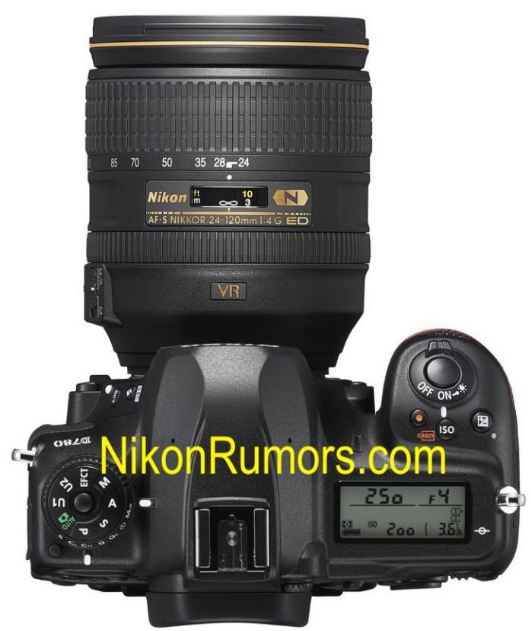 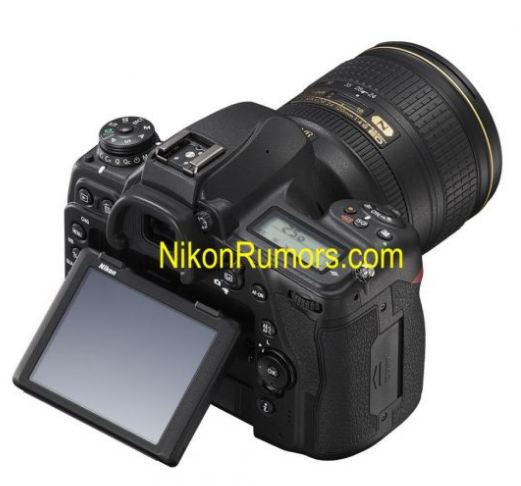 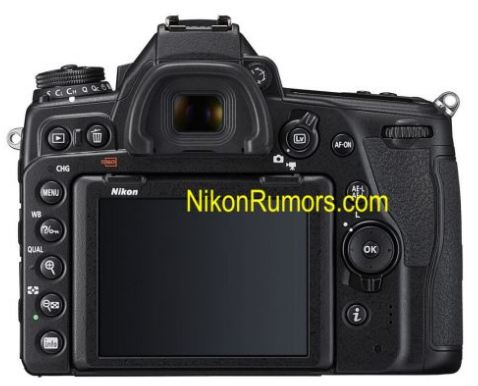 Why Nikon removed the joystick on the back of the camera, it was dam helpful for jumping in the camera menus ? Why Nikon removed the joystick on the back of the camera, it was dam helpful for jumping in the camera menus ?
as we always say, take it with grain of salt. We will be updating you with more details soon.

Follow us on our social pages FACEBOOK | TWITTER | INSTAGRAM to get live news + Nikon Rumors 24X
source
By admin, on January 3rd, 2020
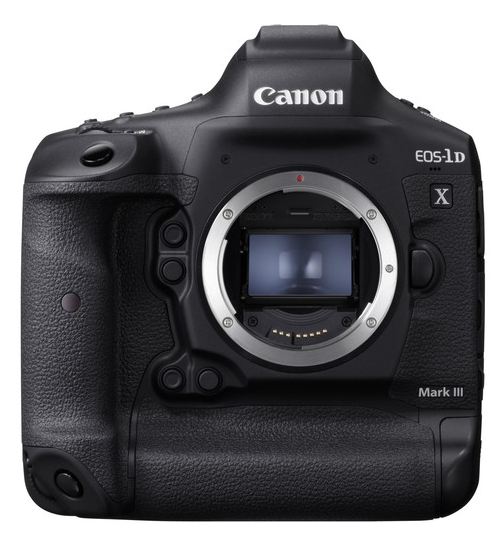
Finally we have the detailed specification of the to be announce Canon 1DX Mark III camera. Have a look.
Canon EOS-1D X Mark III Major features
- 20.1mp
- 16fps/20fps
- ISO 100-102,400
- 4K at 60p (No DPAF in 4K)
- Dual CFexpress card slots
Canon EOS-1D X Mark III Full Specifications:
- Digital single-lens reflex AF / AE camera
- Memory Card: Dual CFexpress
- Image sensor size: 35.9 x 23.9 mm
- Lens mount: Canon EF Lens Family
* Except for EF-S lens and EF-M lens (effective field of view is almost the same as the effective field of view of the lens focal length)
- Image Sensor Type: CMOS
- Image Sensors Resolution: 20 million pixels
* Rounded to 100,000 units
- Aspect ratio: 3: 2
- Dust removal function
- Auto / Manual, Dust Delete Data Attached
- Record format: DCF 2.0
- Image format
JPEG (8bit), HEIF (10bit), RAW (14bit Canon original)
RAW + JPEG simultaneous recording is possible
RAW + HEIF simultaneous recording possible
* 12-bit A / D conversion processing is applied to RAW images taken with the electronic shutter
- Record Pixels
JPEG
L Approx. 20 million pixels (5472 × 3648)
M1 Approx.12.7 million pixels (4368 × 2912)
M2 Approx.8.9 million pixels (3648 × 2432)
S approximately 5 million pixels (2736 × 1824)
HEIF L Approx. 20 million pixels (5472 × 3648)
RAW RAW / C-RAW Approx. 20 million pixels (5472 × 3648)
- Storage function: Still photo / video split, Still photo save option, Movie save option, Still photo save / playback, Save / play video
- Create and select folder possible
- Filename: Default setting, user setting 1, user setting 2
- File number: Continuous, auto reset, manual reset
- Image processing during shooting
- Picture style
Auto, Standard, Portrait, Landscape, Fine Detail, Neutral, Faithful, Monochrome, User Def. 1–3
- White balance
Auto (Atmosphere Priority), Auto (White Priority), Preset (Sunlight, Shade, Cloudy, Tungsten, White, Fluorescent light, flash),
- User setting, color temperature setting (approximately 2500-10000 K)
White balance correction and white balance bracketing
Flash color temperature information can be sent
- White balance correction
Blue / amber correction: ± 9 levels
Magenta / Green Correction: ± 9 Levels
- White Balance Bracketing
± 3 stops in 1-stop increments
- Automatic Image Brightness Correction
- Auto brightness optimization
- Noise reduction
Applicable for high ISO speed shots and long exposures
- Highlight tone priority
- Lens aberration correction
- Peripheral Illumination Correction, Distortion Correction, Digital Lens Optimization, Chromatic Aberration Correction, Diffraction Correction
- Viewfinder: Eye Level Pentaprism
- Field of view (range): Approximately 100% of width / length (eye point approximately 20mm)
- Magnification: 0.76x (-1m–1 with 50 mm lens at infinity)
- Diopter: 20 mm (at eyepiece end / -1 m-1)
- Diopter adjustment range: -3.0 – +1.0 m-1 (dpt)
- Depth-of-field previewsupport
- Auto focus [Viewfinder Shooting]
- Focus method:TTL secondary imaging phase difference detection method (using dedicated AF sensor)
- AF point: Up to 191 points (cross-type AF point: up to 155 points)
- Number of available AF points, number of dual cross-type AF points and cross type AF
- The number of points depends on the lens used.
- Dual cross-type focusing at F2.8 with center AF point
- Focus brightness range: EV -4 – 21 (F2.8 compatible center AF point, One-Shot AF, Room temperature, ISO 100)
- Focus action: One-Shot AF, AI Servo AF, Manual Focus (MF)
- AF area selection mode: Manual selection: Spot AF, Manual selection: 1 point AF, AF area extension: Landscape / Portrait, AF area extension: Surround,
Manual selection: Zone AF, Manual selection: Large zone AF, Auto selection AF
Subject Recognition AF
- EOS iTR AF settings (color information, face and head can be identified)
iTR: Intelligent Tracking and Recognition
- AF configuration tool Case 1 – 4, Case A
- AI Servo AF Characteristics
- Tracking Sensitivity, Acceleration / Deceleration Tracking
- AF fine adjustment
- AF Microadjustment (All lenses by same amount, Adjust by lens)
- AF assist light
- Flash from external flash for EOS camera
[Live View Shooting / Movie Recording]
Focus method
- Dual Pixel CMOS AF
* AF is not available when recording RAW or 4K 59.94 p / 50.00 p (NTSC / PAL) movies.
- AF method: Face + Tracking, Spot AF, 1 Point AF, AF Area Expansion (Horizontal / Vertical), AF Area Expansion: Ambient, Zone AF,
Large Zone AF: Vertical, Large Zone AF: Horizontal
Available AF Frame Position Up to 3,869 locations
* When selected with multi-controller
- AF areas available for auto selection
- Up to 525 points
- Eye detection AF support
- Magnified view: 5 times / 10 times
- AF area
Horizontal: Approx. 90%, Vertical: Approx. 100%
Horizontal: Approx. 80%, Vertical: Approx. 80%
* Depends on the lens used.
- Manual focus (MF)
- MF peaking, focus guide
[Live View Shooting]
- AF operation
- One-Shot AF, Servo AF, Continuous AF possible
- Focus brightness range: EV -6 – 18
(F1.2, center AF point, room temperature, ISO 100, One-Shot AF)
- AF configuration tool: Case 1–4, Case A
- Servo AF Characteristics
- Tracking Sensitivity, Acceleration / Deceleration Tracking
[Record video]
- Focus brightness range: EV -4 – 18
(f/1.2, center AF point, room temperature, ISO 100, One-Shot AF, 29.97 fps)
- Video Servo AF support
- Video Servo AF Characteristics
- Tracking Sensitivity, AF Speed
- Exposure control
- Metering mode
- Viewfinder shooting: 216-division (18×12) TTL using approximately 400,000-pixel RGB + IR metering sensor
Open metering
- Live View shooting / Movie recording: 384 split (24×16) metering using signals from the image sensor
Metering mode
- Viewfinder shooting:
- Evaluative metering
- Partial metering (approximately 6.2% of screen)
- Spot metering (approximately 1.5% of screen)
* AF point-linked spot metering and multi-spot metering options included.
- Center-weighted average metering
- Live View shooting: Evaluative metering, partial metering (approximately 5.8% of the screen), spot metering (approximately 2.9% of the screen)
- Video recording: center-weighted average metering, evaluative metering
* Automatically set according to shooting conditions.
- Focus brightness range
- Viewfinder shooting: EV 0 – 20 (room temperature, ISO 100)
- Live View shooting / Movie recording: EV -3 – 20 (at room temperature, ISO 100)
Shooting mode
- Taking still photos:
- Program AE, Shutter-Priority AE, Aperture-Priority AE, Manual Exposure, Bulb
- Exposure, Custom Shooting Mode
(C1 / C2 / C3)
- Video recording:
- Program AE, Shutter-Priority AE, Aperture-Priority AE, Manual Exposure,
- Custom Shooting Mode (C1 / C2 / C3)
- ISO sensitivity (recommended exposure index)
- Taking still photos:
- ISO Auto (automatic setting in the range of ISO 100 – 102400),
- Manual setting in ISO 100 – 102400 range (in 1 / 3- or 1-stop increments), L (equivalent to ISO 50),
- Sensitivity extended to H1 (equivalent to ISO 204800), H2 (equivalent to ISO 409600), and H3 (equivalent to ISO 819200)
possible
* When highlight tone priority setting: ISO 200 – 102400
- Video recording:
- Program AE / Av / Tv: ISO Auto (automatically set within the range of ISO 100 – 25600), H1 (ISO 204800 equivalent)
M: ISO Auto (automatically set within the range of ISO 100 – 25600),
Manual setting in ISO 100 – 25600 (in 1 / 3- or 1-stop increments), H1 (ISO 204800
- Sensitivity can be extended
* When highlight tone priority setting: ISO 200 – 25600
- ISO sensitivity settings
- Taking still photos:
SO speed setting range, auto range, minimum shutter speed
- Video recording:
- ISO sensitivity setting range, automatic maximum value
- Exposure compensation
- Manual: ± 5 stops in 1 / 3- or 1 / 2-stop increments (viewfinder shooting),
± 3 stops in 1 / 3- or 1 / 2-stop increments (Live View shooting, movie recording)
- AEB: ± 3 stops in 1 / 3- or 1 / 2-stop increments (can be combined with manual exposure compensation)
- AE lock
- Still photo shooting:
- Auto: AE lock with Custom Function when focus is achieved in each metering mode can be set on / off
- Manual: using the AE lock button
- Movie recording: using the AE lock button
- Flicker Reduction
- Available (when viewfinder shooting)
- Multiple exposure
- Function / operation priority, continuous shooting priority
- Multiple exposures: 2 – 9 times
- Multiple exposure control
- Increase, average, brighten, darken
- HDR shooting (still picture HDR PQ)
- Record format
- HEIF
- Bit depth
- 10bit
- Color sampling
- YCbCr 4: 2: 2
- HDR specification
- ITU-R BT.2100 (PQ)
- Electronically controlled focal plane shutter
- Shutter method
- Viewfinder shooting: mechanical
- Live View shooting: mechanical, electronic curtain, electronic
- Mechanical / electronic curtains: 1/8000 sec – 30 sec, bulb
Electronic setting: 1/8000 sec – 0.5 sec
Maximum shutter speed during flash synchronization: 1/250 sec.
* The setting range is different for movie recording.
- Drive modes: Single shot, high speed continuous shooting, medium speed continuous shooting, low speed continuous shooting, one soft shooting, soft continuous shooting
- Shooting, soft low-speed continuous, self-timer: 10 seconds, self-timer: 2 seconds
- Continuous shooting speed: One-Shot AF up to approx. 16 shots / sec
(Setting range: 3-16 sheets / sec)
- Up to approx. 20 shots / sec
- AI Servo AF / Servo AF
- Medium speed continuous shooting: One-Shot AF Approx. 10 shots / sec
(Setting range: 2-15 sheets / sec)
- Approx. 10 shots / sec. * 3
- AI Servo AF / Servo AF
- Time lapse
- One-Shot AF Approx.3.0 shots / sec
(Setting range: 1-14 sheets / second)
- Approx.3.0 sheets / sec
- AI Servo AF / Servo AF
- Soft continuous shooting
- 8.0 shots / sec
(Setting range: 2-8 sheets / second)
- Approx. 10 shots / sec. * 3
We will update you soon as we get any new information.

Get LIVE RUMORS –> FACEBOOK | TWITTER | INSTAGRAM to to get live news + Canon rumors 24X7
By admin, on January 2nd, 2020
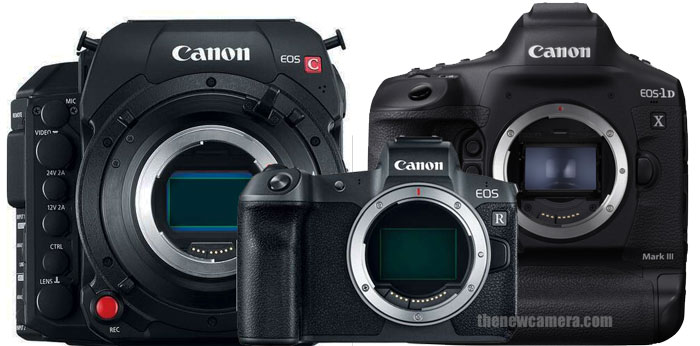
We have spotted a patent were you can clearly see Canon working on a hybrid Mount Video aka Cinema Camera. Let’s go step by step to understand how the Canon Hybrid Mount Camera works
1. Canon Hybrid Mount Camera is Reality and Not-Just a Rumor
Yes, We have discovered patent that clearly shows Canon is working on Hybrid Mount camera. But, as per the patents Canon is initially working on Cinema camera with Hybrid Mount. In near future they may also implement the same technology to Canon Mirrorless Cameras or DSLRs.
2. How Canon Hybrid Mount Camera Work ?
- Once use attaches the lens camera power – ON the camera, the Mount detection unit gets activated.
- Once the camera detects the type of Lens used in the camera, it opens up it’s dedicated user-interface options for particular lens mount.
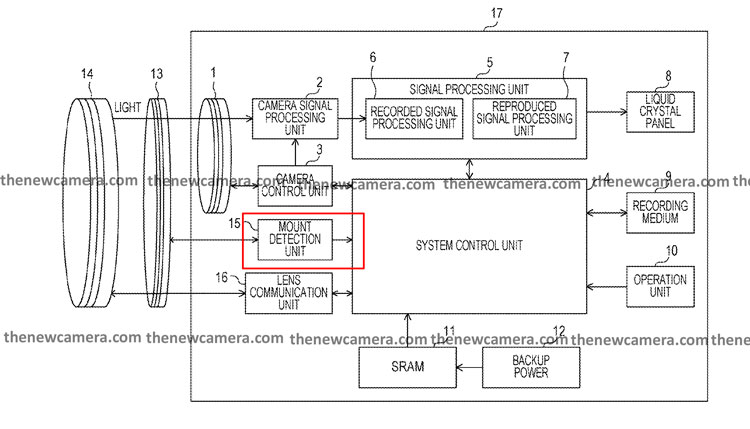
From the flow-chart below you can understand the mode of operation of a Hybrid Mount camera once the lens is attached to it.
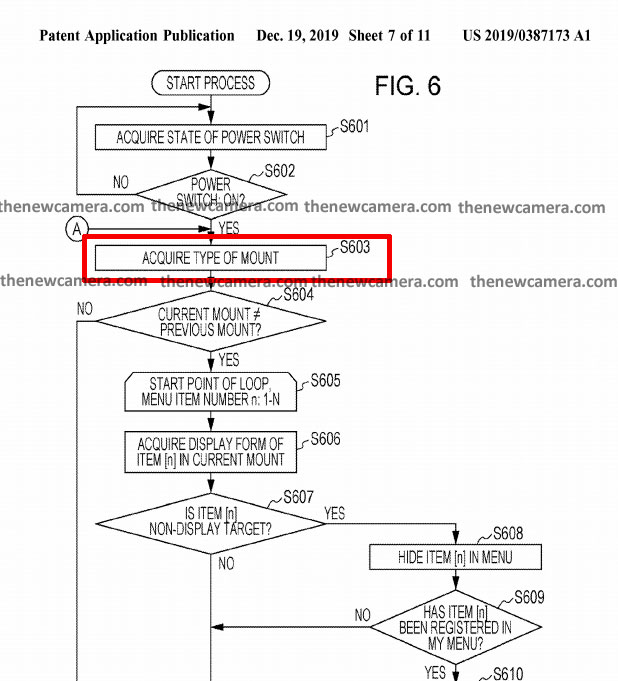
So, finally we have the Hybrid camera patents. And in general once a patent get registered it roughly take two or three years to become a reality. So, if everything goes well we may see a hybrid mount camera sometime in 2022 or may be 2023.
We will update you soon as we get any new information.

Get LIVE RUMORS –> FACEBOOK | TWITTER | INSTAGRAM to to get live news + Canon rumors 24X7
By admin, on January 2nd, 2020
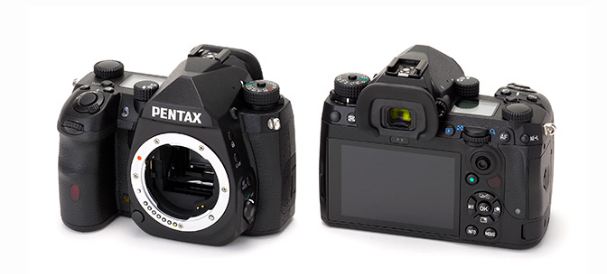
It’s a confirmed news that Pentax will be revealing their APS-C flagship camera on the summer of 2020. This is just a followup of the Pentax APS-C flagship development announcement news.
So, most probably we will have a official announcement from Pentax in the month of June-July 2020. We all know that the upcoming camera is a successor Pentax K-3 II [Flagship model]. But, as per the rumors we have the name of the camera isn’t Pentax K-3 III.
We will update you soon as we get latest updates
http://thenewcamera.com/pentax-k-mount-digital-slr-camera-development-announcement/
Get LIVE RUMORS –> FACEBOOK | TWITTER | INSTAGRAM, Or subscribe us via Email or Push Notification You Can also Download our Android App for live news + Pentax rumors 24X7
By admin, on January 1st, 2020
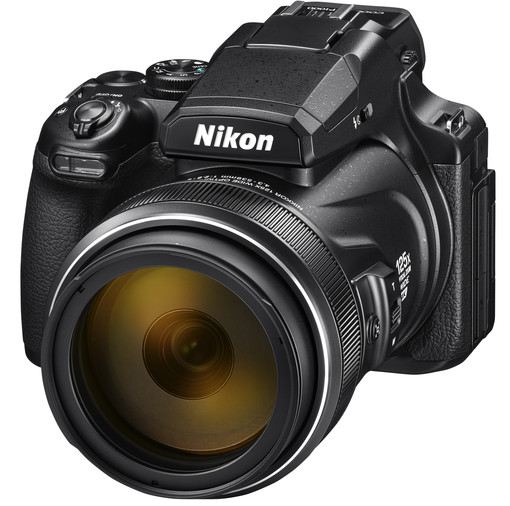
Nikon is about to announce a new Megazoom Camera Nikon P950 next week with Nikon D780 camera as well as two new Nikon Lenses. Take a look at the list of Nikon cameras and lenses coming on next week on January 2020
Nikon Camera and Lenses Coming Soon
- Nikon D780
- Nikon AF-S NIKKOR 120-300mm f/2.8E FL ED SR VR
- Nikon NIKKOR Z 70-200mm f/2.8 VR S
- Nikon Coolpix P950
We already have lot of details about the Nikon D780 camera. Btw, We do have information in past that Nikon registered a compact camera now we got conformation that its a Nikon P950 camera. We will update you soon as we get any new information or images of the upcoming cameras.
as we always say, take it with grain of salt. We will be updating you with more details soon.

Follow us on our social pages FACEBOOK | TWITTER | INSTAGRAM to get live news + Nikon Rumors 24X7
source
By admin, on December 30th, 2019
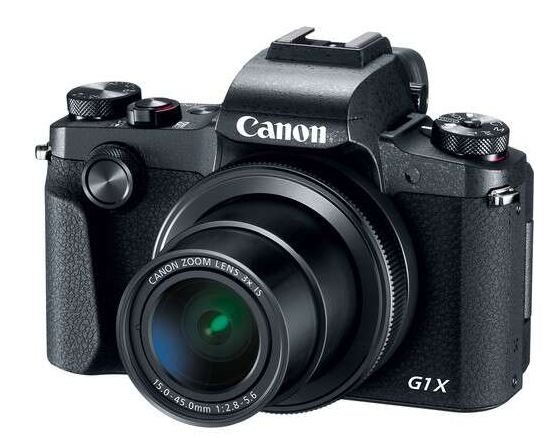
According to the latest rumors surfaced over the web, Canon G1X Mark IV camera is coming with Blazing fast AF (comparatively better than G1X Mk III) and an option to record 4K videos. The camera is rumored to feature the latest 24MP DPAF sensor and expected to arrive in Q1/Q2 of 2020. It looks like Canon do have several prototypes of the Canon G1X Mark IV camera.
Update: Most of the Canon camera announcements delayed due to production line issues of 2020. We are now expecting the arrival of Canon G1X Mark IV sometime in 2021. We will post an update soon as we get the latest information about the G1X Mark IV camera.
http://thenewcamera.com/canon-1600d-delayed/

Get LIVE RUMORS –> FACEBOOK | TWITTER | INSTAGRAM to to get live news + Canon rumors 24X7
|
KEEP THIS BLOG ALIVE - Support New Camera Buy Canon Lenses, Buy Music CD or Digital Camera at amazon it helps this site, and you do not pay anything extra, it is just a way to help support this site.

|








 Why Nikon removed the joystick on the back of the camera, it was dam helpful for jumping in the camera menus ?
Why Nikon removed the joystick on the back of the camera, it was dam helpful for jumping in the camera menus ?










